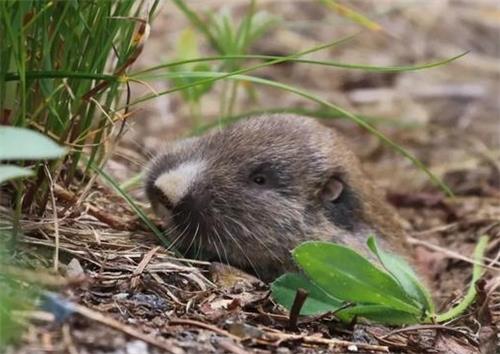
On May 18, 1980, Mount St. Helens in Washington State, USA, erupted suddenly, releasing volcanic ash and sulfur dioxide that caused unprecedented environmental damage. The eruption not only destroyed surrounding vegetation but also altered the chemical composition of the soil and disrupted the ecological structure. The remnants of this disaster, including areas blanketed in thick volcanic ash, became unique experimental sites for studying ecological restoration.
In the years following the eruption, the damaged regions struggled to recover. Soil microorganisms were nearly wiped out, and the acidic changes in volcanic ash severely inhibited the functioning of underground ecosystems. Although birds occasionally brought plant seeds to the area, the infertile soil made it difficult for vegetation to take root.
Faced with this ecological crisis, Michael F. Allen and James A. MacMahon from Utah State University proposed a bold hypothesis: if the surviving microorganisms and fungi from deeper soil layers could be brought to the surface, they might promote vegetation recovery. To test this idea, they decided to utilize a naturally burrowing animal—the northern pocket gopher.
The Role of Northern Pocket Gophers:
Northern pocket gophers, small in size and adept at digging, are considered crucial organisms in altering soil structure. Each gopher can loosen up to 227 kilograms of soil per month. Allen and MacMahon believed that the gophers' burrowing behavior could transport microorganisms, seeds, and fungi from deeper layers to the surface, creating favorable conditions for plant regeneration.
They conducted experiments in the ash-covered areas, placing northern pocket gophers in specific plots and allowing them to roam for just 24 hours. The results were astonishing—within a single day, the gophers triggered long-term ecological changes.
Experimental Results and Ecological Recovery:
In 1982 and 1983, Allen and MacMahon conducted experiments on the pumice plains on the north side of Mount St. Helens, areas covered by over 20 meters of volcanic ash and virtually devoid of life. In these regions, they fenced off one-square-meter plots with wire mesh, placed northern pocket gophers inside, and observed their effects on vegetation.
Surprisingly, just 24 hours later, the areas "tilled" by the gophers showed clear signs of vegetation recovery. In the experimental plots, the roots of Lupinus lepidus (Pacific lupine) developed arbuscular mycorrhizae, a symbiotic structure formed between plants and fungi that is crucial for plant growth. In contrast, plants in areas untouched by gophers showed no such changes.
Lasting Impact:
Six years later, Allen and MacMahon revisited the experimental sites and found that the areas once disturbed by the northern pocket gophers had sprouted approximately 40,000 plants, while the untouched regions remained barren. Through their burrowing activities, the gophers had brought fungi, seeds, and insects to the surface, accelerating the restoration of the ecosystem.
Additionally, gopher feces contained fungal spores and plant seeds, further enhancing soil biodiversity. Over the years, the soil once buried under volcanic ash not only came back to life but also became more suitable for plant growth. The mixture of ash with deeper soil layers resulted in a more aerated and fertile environment.
Long-Term Effects and the Role of Microorganisms:
Allen and his team also discovered that when they conducted soil sampling again in the pumice plains in 2014, the areas where gophers had been placed showed differences in carbon and nitrogen content compared to untouched areas. The microbial diversity in these plots was higher than in other regions. Notably, the diversity of mycorrhizal fungi had significantly increased in the experimental areas, indicating that the northern pocket gophers not only altered the physical composition of the soil but also drove long-term succession in soil microbial communities.
This finding further highlights the critical role of microorganisms in ecological recovery. After the volcanic eruption, forested regions like Bear Meadow were able to regenerate quickly due to their unique tree recovery mechanisms. However, in ash-covered areas, the northern pocket gophers played a key role in accelerating ecological restoration.

Quasimodo,Esmeralda
Quasimodo and Esmeralda: A Love Story Beyond Appearance
Amid the tolling bells of Notre-Dame de Paris, there exists a forgotten love story—one filled with pain, sacrifice, and profound emotion.

Valentine,the Blind Maiden
The Origin of Valentine's Day: Valentine and the Blind Maiden’s Heartfelt Farewell
Every year on February 14th, the Western world celebrates a special occasion—Valentine’s Day. On this day, couples exchange gifts, express their love, and give flowers, chocolates, and greeting cards, filling the world with an air of romance.

The Mystery of Bee Flight
Decoding the Mystery of Bee Flight: The Aerodynamic Marvel Behind Rapid Wingbeats
The mystery of bee flight has long puzzled scientists, particularly from an aerodynamic perspective, as their flying technique appears to contradict conventional physical principles.


